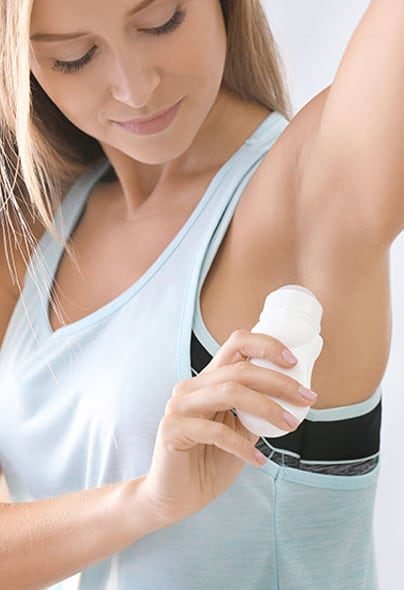If you suffer from hyperhidrosis—a condition characterized by excessive, uncontrollable sweating—you may be wondering if Botox injections are the best solution. Botox (botulinum toxin type A) is FDA-approved for treating severe underarm sweating and is commonly used off-label for other areas like the hands, feet, and face. While it’s a popular and effective treatment, it’s important to weigh the benefits and drawbacks to decide if it’s the best option for your needs.
Let’s break down the pros and cons of Botox for hyperhidrosis, compare it with other treatment options, and help you decide whether it’s right for you.
✅ Pros of Botox for Hyperhidrosis
1. Highly Effective
Botox is one of the most effective treatments for focal hyperhidrosis, with clinical studies showing up to a 90–95% reduction in sweat production, especially in the underarms.
2. Fast Results
Most patients notice a significant reduction in sweating within 4 to 7 days, with full results typically appearing in 1 to 2 weeks after treatment.
3. Minimally Invasive
Botox is a non-surgical, outpatient procedure that typically takes 20–45 minutes. No general anesthesia or recovery time is required.
4. Safe with Few Side Effects
When administered by a qualified professional, Botox has a strong safety profile. Side effects are generally mild and temporary, such as minor bruising or swelling at injection sites.
5. Improves Quality of Life
Many patients report significant improvements in:
- Confidence and self-esteem
- Comfort in social and professional situations
- Clothing choices (no more sweat stains!)
6. FDA-Approved for Underarm Sweating
Botox is officially approved by the U.S. FDA for axillary hyperhidrosis, which means insurance coverage is more likely (if other treatments have failed).
❌ Cons of Botox for Hyperhidrosis
1. Temporary Results
Botox is not a permanent solution. Results last approximately 4 to 6 months, and repeat treatments are required to maintain dryness.
2. Can Be Costly
- Botox treatments for hyperhidrosis can range from $1,000 to $1,500 per session (underarms), and more for areas like palms or feet.
- Although some insurance plans (including Medicare and Medicaid) may cover the cost, approval often requires extensive documentation and failed prior treatments.
3. Discomfort During Injections
Some treatment areas, like the hands and feet, can be painful to inject due to nerve sensitivity. Topical numbing agents help, but the procedure may still be uncomfortable.
4. Not FDA-Approved for All Areas
While widely used off-label for palmar (hands), plantar (feet), and craniofacial (head/face) hyperhidrosis, Botox is only FDA-approved for underarm sweating. This may affect insurance coverage and treatment consistency.
5. Risk of Muscle Weakness
Especially when injected into the hands, Botox can cause temporary muscle weakness, which may interfere with tasks like writing, typing, or gripping objects.
6. Requires a Skilled Provider
Effective and safe Botox treatment for hyperhidrosis requires a provider experienced in medical (not just cosmetic) Botox. Injections must be placed accurately to minimize side effects and maximize effectiveness.
🆚 How Does Botox Compare to Other Treatments for Hyperhidrosis?
| Treatment | Pros | Cons |
|---|---|---|
| Botox | Highly effective, fast, non-surgical | Temporary, costly, repeat sessions needed |
| Prescription Antiperspirants | Easy to try, inexpensive | Often ineffective for severe cases, skin irritation |
| Oral Medications (Anticholinergics) | Systemic control of sweating | Dry mouth, blurred vision, urinary retention, drowsiness |
| Iontophoresis | Effective for hands/feet, at-home use possible | Time-consuming, may cause skin irritation |
| MiraDry | Permanent reduction, no repeat treatments needed | Only FDA-approved for underarms, expensive, localized |
| ETS Surgery | Permanent for hands or face | Major side effects (compensatory sweating, nerve damage) |
🧠 Who Is Botox Best For?
Botox may be the best treatment option if you:
- Have severe, focal hyperhidrosis (especially underarms)
- Have failed topical or oral treatments
- Want quick, significant relief without surgery
- Can afford out-of-pocket costs or have insurance coverage
- Don’t mind repeat treatments every 4–6 months
📌 Final Verdict: Is Botox the Best Treatment for Hyperhidrosis?
Botox is one of the most effective, safe, and fast-acting treatments for hyperhidrosis—especially for the underarms. While it may not be a permanent solution, it dramatically reduces sweating and improves quality of life for most patients. The main trade-off is the need for ongoing maintenance treatments and potential costs.
If you’re looking for a non-surgical solution with high success rates, Botox is often the first-line recommendation by dermatologists once prescription antiperspirants or medications fail.




